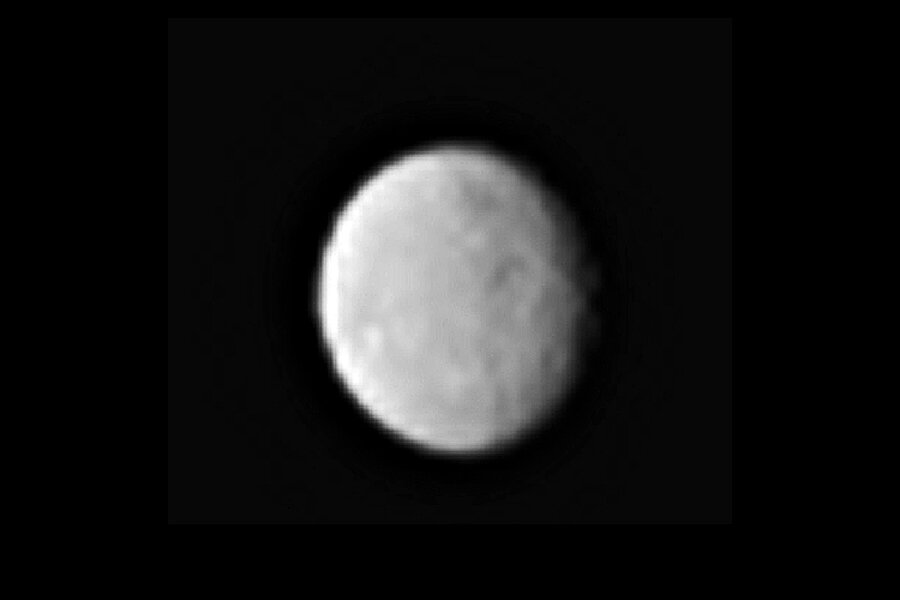NASA's Dawn reaches Ceres, becomes first spacecraft to orbit dwarf planet
Loading...
NASA astronomers and engineers breathed a sigh of relief Friday morning, as the Dawn spacecraft became the first Earthly vessel to achieve orbit around a dwarf planet.
Mission controllers at NASA’s Jet Propulsion Laboratory in Pasadena, Calif., received confirmation from the craft at 5:36 Pacific time, NASA reported.
“After a journey of 3.1 billion miles and 7.5 years, Dawn calls Ceres, home," Dawn’s chief engineer Marc Rayman said in a press release Friday morning.
The 3.1-billion-mile journey included a 14-month layover on the asteroid Vesta, the second largest object in the asteroid belt between the orbits of Mars and Jupiter. Ceres is the largest, not quite big enough to be considered a planet.
Astronomers are hoping that data gathered by Dawn from Ceres and Vesta will offer clues to understanding the conditions that existed in the region when the planets were forming some 4.56 billion years ago, the Monitor’s Pete Spotts reported Thursday.
These are “two intact protoplanets from the very dawn of the solar system,” JPL planetary scientist Carol Raymond said during a briefing Thursday as Dawn closed in on Ceres’s orbit. “They are two fossils we can investigate to understand what was really going on at that time.”
Ceres is believe to be 25 percent water ice. Researchers have speculated that the presence of that ice could suggest that the dwarf planet hosted liquid water early in its history, Mr. Spotts reported.
Dawn's measurements of surface features, especially the shapes and sized of the numerous craters that pock the surface, will provide an important test of this hypothesized blueprint for Ceres' structure.
The relatively high abundance of water ice researchers attribute to Ceres has raised the intriguing possibility that the dwarf planet briefly hosted liquid water in early its history, as radioactive decay from minerals in a rocky core heated the underside of the ice layer and melted it.
This could have provided a habitat for microbial life, notes Dr. Raymond.
Dawn’s visit to Ceres’s orbit is planned to last until June 2016. In that time, the craft will circle the dwarf planet at varying altitudes.
“We feel exhilarated,” said Chris Russell, principal investigator of the Dawn mission at the University of California, Los Angeles, in JPL’s release. “We have much to do over the next year and a half, but we are not on station with ample reserves, and a robust plan to obtain our science objectives.”
For more information about those science objectives, read Pete Spotts’s full coverage of the historic approach.








